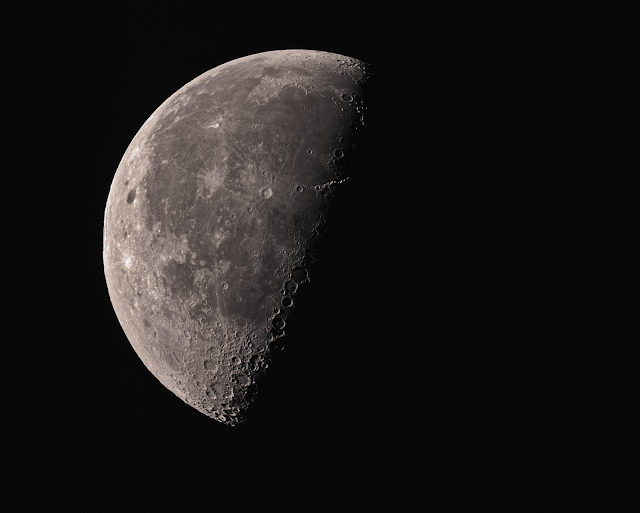Every day our eyes catch the light of our memories – time spent with family, the journey to work, a special holiday, a beautiful sunset or a dark starlit night. Each image captured is a picture drawn in light – a photograph: only to be lost in our minds or forever forgotten. Nearly two hundred years ago a small group of amateur scientists achieved what had eluded mankind for centuries – the ability to capture a permanent record of an image seen by their own eyes – a moment in time frozen onto a surface. They had discovered Photography. They were the ‘Catchers of the Light’.
Saturday, November 12, 2016
Helix Nebula_NGC 7293_Ha 5nm
The Helix Nebula, also known as The Helix, NGC 7293, is a large planetary nebula (PN) located in the constellation Aquarius. Discovered by Karl Ludwig Harding, probably before 1824, this object is one of the closest to the Earth of all the bright planetary nebulae.The estimated distance is about 215 parsecs (700 light-years). It is similar in appearance to the Cat's Eye Nebula and the Ring Nebula, whose size, age, and physical characteristics are similar to the Dumbbell Nebula, varying only in its relative proximity and the appearance from the equatorial viewing angle.
*from Wikipedia , the free encyclopedia
Instruments and exposure data:
W.O FLT110 with dedicated TMB field flattener
FeatherTouch 3'' focuser
Starizona MicroTouch autofocuser
SBIG ST10XME CFW9 W.O ZS80 ED
Meade DSI
Filters: 5nm Hα Astrodon
Sky-Watcher EQ6 Pro
Lum:108*10min bin1x1 Data from 2012 and 2015
Total exposure time:18h
Tuesday, June 28, 2016
Emission Nebula NGC6820 with Open Cluster NGC6823
NGC 6820 is an emission nebula that surrounds open cluster NGC 6823 in Vulpecula, near M27, the Dumbbell Nebula. The nebula NGC 6820 is also called Sharpless catalog Sh 2-86.
The most striking feature is the trunk-like pillar of dust and gas protruding from the east side of the nebula towards the open cluster, NGC 6823 in the west. The center of the open cluster is about two million years old and is predominantly represented by many young, bright blue stars. Outer parts of the cluster intimately involving pillars of emission nebula NGC 6820, contain even younger stars. The huge pillars of gas and dust are probably formed when surrounding gas and dust is pushed and eroded away by radiation from nearby stars. Remarkable dark globules of gas and dust are also visible in the nebula, much as is seen in the better known Eagle Nebula in Serpens or the Lagoon Nebula in Sagittarius.
Open star cluster NGC 6823 is about 50 light years across and lies about 6000 light years away
*From Wikipedia, the free encyclopedia
Instruments and exposure data:
W.O FLT110 with dedicated TMB field flattener
FeatherTouch 3'' focuser
Starizona MicroTouch autofocuser
SBIG ST10XME CFW9
W.O ZS80 ED
Meade DSI
Filters: 5nm Hα Astrodon
Sky-Watcher EQ6 Pro
Lum:39*10min bin1x1
Total exposure time:6h 30min
Location: Vironas,Athens Greece
Meade DSI
Filters: 5nm Hα Astrodon
Sky-Watcher EQ6 Pro
Lum:39*10min bin1x1
Total exposure time:6h 30min
Location: Vironas,Athens Greece
Sunday, June 5, 2016
Waning Cresent Moon
Waning Cresent Moon
22,72 Days old _29 May 2016
Instruments and exposure data:
W.O FLT110 with dedicated TMB field flattener
FeatherTouch 3'' focuser
Starizona MicroTouch autofocuser
W.O ZS80 ED
SBIG ST10XME CFW9
Meade DSI
Filters: Ha 5nm Astrodon _OII 3nm Astrodon _ SII Baader
Sky-Watcher EQ6 Pro
Friday, January 29, 2016
M63 Sunflower Galaxy
M63 was discovered by Pierre Méchain on June 14, 1779.[4] The galaxy was then listed by Charles Messier as object 63 in the Messier Catalogue.
In the mid-19th century, Lord Rosse identified spiral structures within the galaxy, making this one of the first galaxies in which such structure was identified.[4]
In 1971, a supernova with a magnitude of 11.8 appeared in one of the arms of M63.
W.O FLT110 with dedicated TMB field flattener
FeatherTouch 3'' focuser
Starizona MicroTouch autofocuser
W.O ZS80 ED
SBIG ST10XME CFW9
Meade DSI
Filters: Lum Baader
Sky-Watcher EQ6 Pro
Lum:51*7min bin1x1
Total exposure time:6h
Location: Vironas,Athens Greece
Subscribe to:
Posts (Atom)






